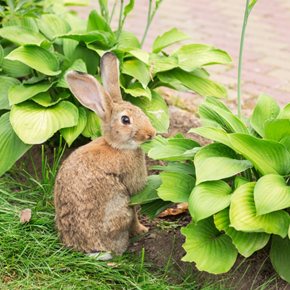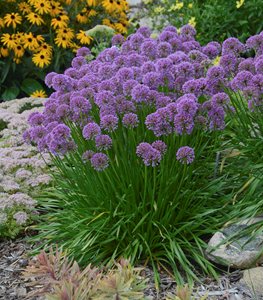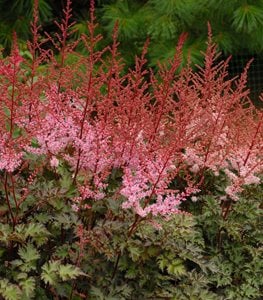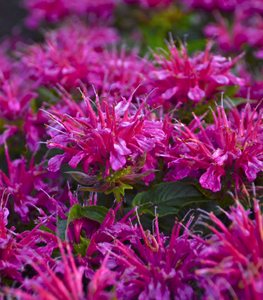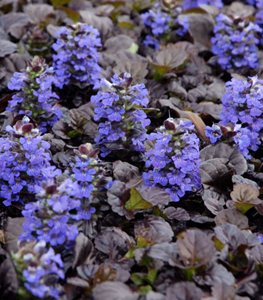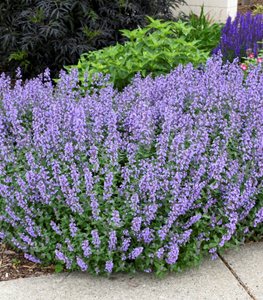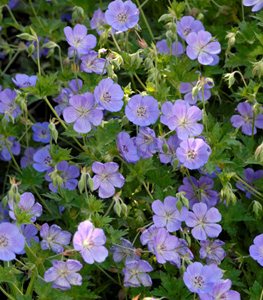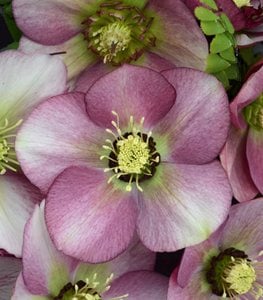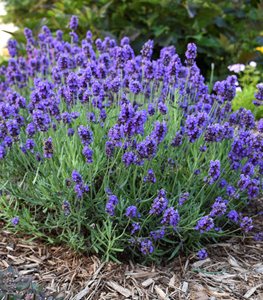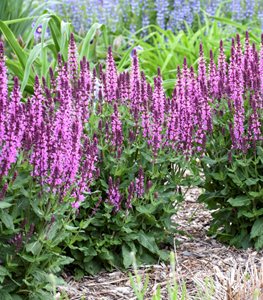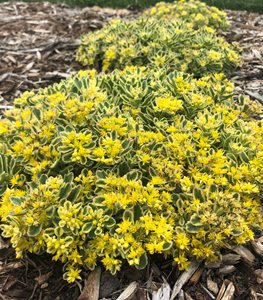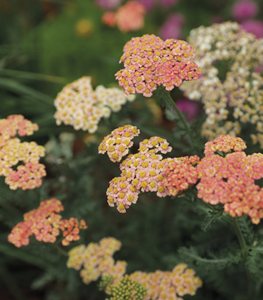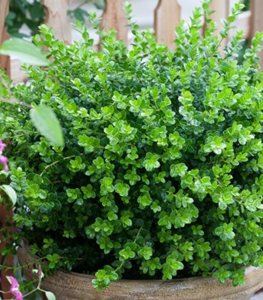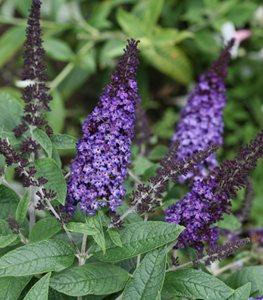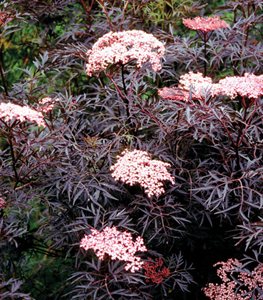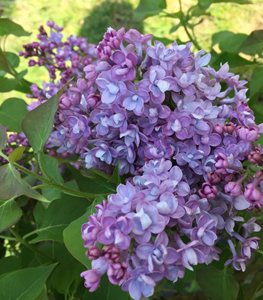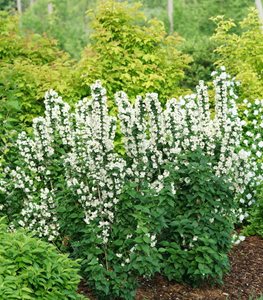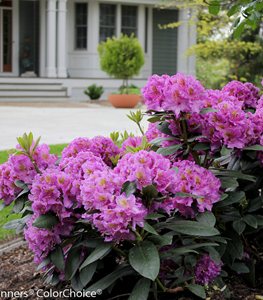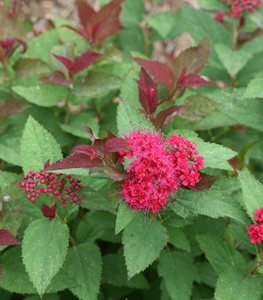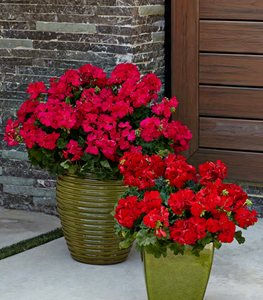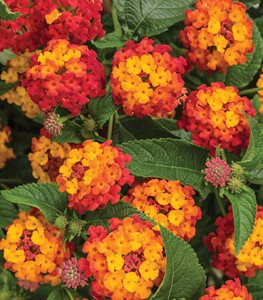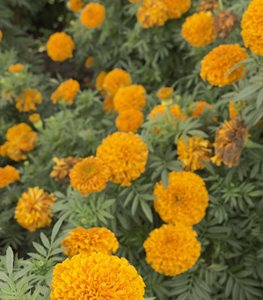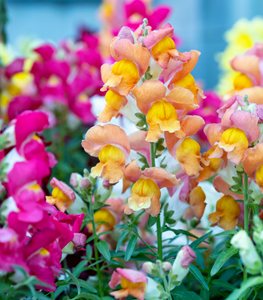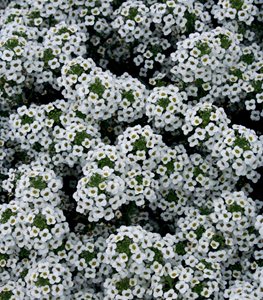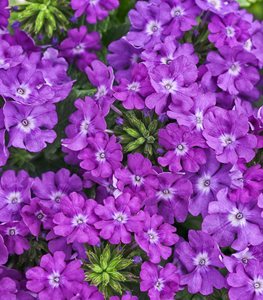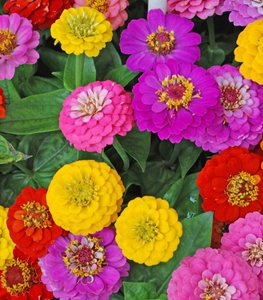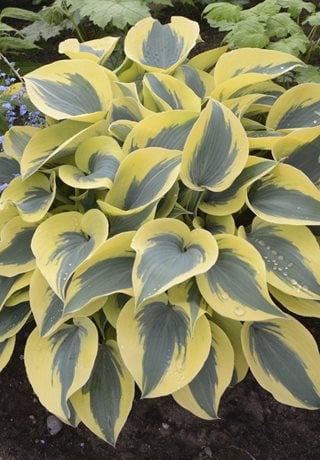25+ Rabbit-Resistant Plants to Grow
Keep destructive rabbits at bay with these resilient garden plantsOne of the appeals of having a garden is attracting wildlife to your yard. Though wild rabbits are adorable and harmless looking, they can actually cause a lot of damage to your treasured garden plants. Rabbits are herbivores that feed primarily on grass, dandelions, clover, and leafy greens. They have a voracious appetite and reproduce quickly, making them a nuisance for gardeners, even in urban areas.
Some garden plants are more rabbit-resistant than others. Rabbits are less likely to eat plants with a strong fragrance; bitter taste; rough, prickly or hairy texture; and have toxic properties. Plants that are rabbit-resistant are also likely to repel deer, and vice versa. Few plants are completely rabbit-proof, as they will nibble on almost anything if they are hungry enough. As the University of Arizona notes, rabbits’ preferences can shift with food availability, rainfall, and temperature, and young or well-fertilized plants may sometimes be more appealing than mature ones.
Protect your yard from destructive rabbits by including these plants in your landscape.
On this page: Perennials | Shrubs | Annuals | Other Plants | Design Tips
On this page:
- RABBIT-RESISTANT PERENNIALS
- RABBIT-RESISTANT SHRUBS
- RABBIT-RESISTANT ANNUALS
- OTHER RABBIT-RESISTANT PLANTS
- DESIGN TIPS
RABBIT-RESISTANT PERENNIALS
ALLIUM (Allium spp.)
Zones: 4-10
Exposure: Full sun
Habit: Upright habit
Height/Spread: 6 to 48 inches tall, 3 to 10 inches wide, depending on the variety
Bloom time: Spring to summer
Why rabbits avoid it: Rabbits are repelled by alliums due to the strong odor and taste. Allium contains compounds that may be toxic to rabbits in larger amounts.
Ornamental
Pictured: 'Serendipity' allium from Proven Winners.
ASTILBE (Astilbe spp.)
Zones: 3-9
Exposure: Full sun to shade; flowers best with partial sun
Habit: Upright spreading habit
Height/Spread: 1 to 4 feet tall and wide
Bloom time: Summer
Why rabbits avoid it: Astilbe contains compounds that are mildly toxic, with a bitter taste and fibrous texture that rabbits find unappealing.
Also known as false spirea, this rabbit-resistant shade plant produces attractive dissected foliage and showy flower plumes in summer. This carefree hardy perennial prefers moist conditions, thriving in woodland borders and along streams and ponds. Learn more about growing astilbe.
Pictured: 'Delft Lace' astilbe from Proven Winners.
BEE BALM (Monarda spp.)
Zones: 3-9
Exposure: Full sun to part shade
Habit: Upright habit
Height/Spread: 1 to 4 feet tall, 1 to 3 feet wide
Bloom time: Late spring to fall
Why rabbits avoid it: The pungent minty scent and taste of bee balm is off-putting to rabbits.
Bee balm is a herbaceous perennial related to mint, with pointed green leaves and whorls of tubular flowers in summer. One of the best plants for attracting a wide range of pollinators, bee balm is useful in mixed borders, native landscapes, and cottage-style gardens. Find more on how to grow bee balm.
Pictured: 'Pardon My Purple' bee balm from Proven Winners.
BUGLEWEED (Ajuga spp.)
Zones: 3-10
Exposure: Full sun to full shade
Habit: Mat-forming habit
Height/Spread: 3 to 12 inches tall, 6 to 24 inches wide
Bloom time: Late spring to early summer
Why rabbits avoid it: Rabbits tend to leave bugleweed alone due to the unappealing taste and mild toxicity, which can cause digestive upset.
Bugleweed is a hardy perennial with a dense spreading habit, colorful foliage and upright flower stalks in spring. This versatile ground cover is tolerant of different growing conditions, is useful underneath shrubs and trees, and for quickly covering large areas. Learn more about how to grow bugleweed.
Pictured: 'Black Scallop' bugleweed from Proven Winners.
CATMINT (Nepeta spp.)
Zones: 3-9
Exposure: Full sun to part shade
Habit: Mounding spreading habit
Height/Spread: 1 to 3 feet tall and wide
Bloom time: Late spring to fall
Why rabbits avoid it: Catmint is related to culinary mint, with a pungent scent and taste that rabbits dislike.
This carefree herbaceous perennial produces gray-green foliage and tubular flowers that bloom for months during the growing season. Plant in a mixed border, waterwise landscape, or rock garden. Learn more about how to grow catmint.
Pictured: 'Cat's Meow' catmint from Proven Winners.
CRANESBILL (Geranium spp.)
Zones: 3-9
Exposure: Full sun to shade
Habit: Upright, mounding, creeping, or clumping habit
Height/Spread: 3 to 36 inches tall, 1 to 3 feet wide
Bloom time: Late spring to fall, depending on the variety
Why rabbits avoid it: Rabbits tend to leave cranesbill alone due to the mildly toxic compounds, unpleasant taste and rough or hairy texture of the leaves.
Cranesbill, also known as hardy geranium, is a tough perennial that thrives in a wide range of growing conditions. Plants produce attractive dissected foliage and cup-shaped flowers in spring and summer. Read more about how to grow cranesbill geranium.
HELLEBORE (Helleborus spp.)
Zones: 4-9
Exposure: Partial sun to full shade
Habit: Clumping habit
Height/Spread: 12 to 24 inches tall and wide
Bloom time: Late winter to early spring
Why rabbits avoid it: The thick, leathery leaves are difficult to chew, while plants contain toxic compounds that may be harmful to rabbits if ingested.
Hellebores produce flowers from winter to early spring, adding color to the garden at a time of year when little else is in bloom. This carefree perennial has cup-shaped flowers in a range of colors and patterns. Learn more about growing hellebores.
Pictured: Honeymoon® Paris in Pink hellebore from Proven Winners.
LAVENDER (Lavandula spp.)
Zones: 5-9
Exposure: Full sun
Habit: Upright bushy habit
Height/Spread: 1 to 4 feet tall, 1 to 5 feet wide
Bloom time: Late spring to early fall
Why rabbits avoid it: Plants contain essential oils and compounds that can be mildly toxic, with a pungent smell and taste that repels rabbits.
One of the most popular herbs, lavenders are grown for the scented foliage and flowers with a wide range of culinary, medicinal and ornamental uses. This Mediterranean native is heat- and drought-tolerant, preferring lean soil. Learn more about growing lavender.
Pictured: Sweet Romance® Lavender from Proven Winners.
SALVIA (Salvia spp.)
Zones: 4-12, depending on the variety
Exposure: Full sun to partial shade
Habit: Upright spreading habit
Height/Spread: 1 to 5 feet tall, 1 to 6 feet wide
Bloom time: Late spring to fall, depending on the variety
Why rabbits avoid it: Related to mint, the leaves have a pungent aroma and rough or hairy texture that repels rabbits. Plants contain essential compounds and oils that can be toxic to rabbits and other animals.
Salvia is a large group of plants with an array of ornamental and culinary uses. Plants produce flowers during warmer months in different colors and shapes. Find more on how to grow salvia.
Pictured: 'Pink Profusion' perennial salvia from Proven Winners.
SEDUM (Sedum spp.)
Zones: 3-9
Exposure: Full sun
Habit: Upright, mounding, or creeping habit
Height/Spread: 3 to 36 inches tall, 12 to 24 inches wide
Bloom time: Summer to fall
Why rabbits avoid it: This carefree perennial contains toxic compounds that can cause digestive upset, with bitter tasting leaves that rabbits will avoid.
This hardy drought-tolerant succulent adds late season color to the landscape, with fleshy leaves and clusters of star-shaped flowers. Use in a waterwise landscape, mixed border or mass planting. Find more on how to grow sedum.
Pictured: Rock 'N Low® 'Boogie Woogie' sedum from Proven Winners.
YARROW (Achillea spp.)
Zones: 3-11
Exposure: Full sun
Habit: Upright spreading habit
Height/Spread: 1 to 4 feet tall, 2 to 3 feet wide
Bloom time: Summer
Why rabbits avoid it: Yarrow plants contain toxic compounds, with a fibrous texture and strong scent that deters rabbits.
This hardy herbaceous perennial, native to North American prairies, thrives in lean soils and dry conditions. Flat-topped flowers are produced in summer, attracting a wide range of pollinators. Find more on how to grow yarrow.
Pictured: 'Firefly Peach Sky' yarrow from Proven Winners.
RABBIT-RESISTANT SHRUBS
BOXWOOD (Buxus spp.)
Zones: 4-9
Exposure: Full sun to shade
Habit: Mounding upright habit
Height/Spread: 1 to 20 feet tall, 2 to 8 feet wide
Bloom time: Spring; flowers are inconspicuous
Why rabbits avoid it: Boxwood shrubs contain toxic compounds, while the dense growth and leathery leaf texture discourages rabbits.
One of the most versatile landscape plants, boxwood is an evergreen shrub with glossy foliage, providing structure to beds and borders. Plants can be sheared into formal hedging. Use to divide garden rooms, in foundation plantings, or shrub borders. Find more on how to grow boxwood.
Pictured: Sprinter® boxwood from Proven Winners.
BUTTERFLY BUSH (Buddleia spp.)
Zones: 5-9
Exposure: Full sun
Habit: Upright bushy habit
Height/Spread: 2 to 12 feet tall and wide
Bloom time: Summer to early fall
Why rabbits avoid it: Butterfly bush is not a preferred food for rabbits due to the rough leaf texture, bitter taste, and fragrant flowers.
This common deciduous shrub produces long flower spikes that are attractive to butterflies and other insect pollinators. Plant in a shrub border, butterfly garden, or as hedging. Find more on how to grow butterfly bush.
Pictured: Pugster Blue® butterfly bush from Proven Winners.
ELDERBERRY (Sambucus spp.)
Zones: 3-9
Exposure: Full sun to partial shade
Habit: Upright bushy habit
Height/Spread: 3 to 30 feet tall and wide
Bloom time: Spring to summer
Why rabbits avoid it: Elderberry contains compounds that may be toxic to rabbits.
This hardy deciduous shrub is grown for its multi-seasonal appeal, with ferny foliage, flat-topped flowers in spring, and showy fruits in summer and fall. Use as a background plant in a mixed border, in a native landscape or rain garden. Find more on how to grow elderberry bushes.
Pictured: Black Lace® elderberry from Proven Winners.
LILAC (Syringa spp.)
Zones: 2-8
Exposure: Full sun to partial shade
Habit: Upright bushy habit
Height/Spread: 4 to 15 feet tall, 3 to 12 feet wide
Bloom time: Spring
Why rabbits avoid it: Lilac foliage can be mildly toxic to rabbits, causing digestive upset if eaten in larger amounts.
One of the most beloved landscape shrubs, lilac produces fragrant clusters of flowers in spring. This hardy carefree plant can be used as hedging or in foundation plantings. Find more on how to grow lilac bushes.
Pictured: Scentara® Double Blue lilac from Proven Winners.
MOCK ORANGE (Philadelphus spp.)
Zones: 4-8
Exposure: Full sun to partial shade
Habit: Upright bushy or arching habit
Height/Spread: 3 to 10 feet tall and wide
Bloom time: Late spring to early summer
Why rabbits avoid it: Though mock orange is not a preferred food for rabbits, they may nibble on tender new growth in early spring. Provide early season protection for young plants to minimize rabbit damage.
Grown for the intensely fragrant flowers, mock orange is a hardy deciduous shrub with white single or double blossoms. Use in a cottage-style garden, native landscape or shrub border. Learn more on how to grow mock orange bushes.
Pictured: Illuminati Tower® mock orange from Proven Winners.
RHODODENDRON (Rhododendron spp.)
Zones: 5-8
Exposure: Full sun to partial shade
Habit: Upright bushy habit
Height/Spread: 2 to 20 feet tall, 3 to 15 feet wide
Bloom time: Late winter to fall, depending on the variety
Why rabbits avoid it: Rhododendron is toxic to rabbits, with a leathery leaf texture that rabbits will avoid.
One of the most popular landscape shrubs, Rhododendron is a broadleaf evergreen with large showy blooms in a range of colors. This versatile shrub can be used as an understory plant in a woodland garden, in a foundation planting, or as hedging. Learn more on how to grow rhododendron shrubs.
Pictured: Dandy Man® Purple rhododendron from Proven Winners.
SPIREA (Spiraea spp.)
Zones: 4-8
Exposure: Full sun to partial shade
Habit: Upright bushy habit
Height/Spread: 2 to 8 feet tall, 2 to 6 feet wide, depending on the variety
Bloom time: Spring to summer, depending on the variety
Why rabbits avoid it: Spiraea is not a preferred food of rabbits due to the rough leaf texture and woody growth.
This popular deciduous shrub is grown for the colorful foliage and attractive flower clusters in spring and summer. Virtually carefree, spirea is versatile in shrub borders, mass plantings, mixed borders, and as hedging. Learn more on how to grow spirea.
Pictured: Double Play Doozie® spirea from Proven Winners.
RABBIT-RESISTANT ANNUALS
GERANIUM (Pelargonium spp.)
Zones: 9-12; most often grown as an annual
Exposure: Full sun to partial shade
Habit: Bushy or vining habit
Height/Spread: 1 to 3 feet tall and wide, with vining types reaching 5 feet long
Bloom time: Spring to fall
Why rabbits avoid it: Annual geraniums contain compounds that are mildly toxic to rabbits, with foliage that has a pungent scent and taste that rabbits dislike.
One of the most popular plants grown as an annual, Pelargonium has lobed foliage and colorful flower clusters that are produced throughout warmer months Grow in pots, hanging baskets, window boxes, or mass in beds. Learn more on how to grow annual geraniums.
LANTANA (Lantana spp.)
Zones: 9-11; most often grown as an annual
Exposure: Full sun
Habit: Upright, bushy, spreading, or ground cover habit
Height/Spread: 2 to 6 feet tall, 3 to 10 feet wide, smaller when grown as an annual
Bloom time: Late spring through frost when grown as an annual; nearly year-round in frost-free climates
Why rabbits avoid it: Lantana contains toxic compounds that can cause gastrointestinal upset. The leaves have a rough texture, with a pungent scent that repels rabbits.
Also known as shrub verbena, lantana produces clusters of colorful flowers for much of the growing season. This tender perennial is most often grown as an annual. Use in containers, beds, as a focal point, or in combination with other plants. Learn more on how to grow lantana.
Pictured: Luscious® Citrus Blend™ lantana from Proven Winners.
MARIGOLD (Tagetes spp.)
Zones: Annual in all zones
Exposure: Full sun
Habit: Upright or compact habit
Height/Spread: 6 to 48 inches tall, 6 to 24 inches wide
Bloom time: Late spring to frost
Why rabbits avoid it: Marigolds are one of the best annuals to deter rabbits from vegetable plots due to its pungent scent and taste.
This popular annual produces ferny foliage and single or double flowers that bloom throughout warmer months. Use as edging along pathways and borders, in containers, or raised vegetable beds. Learn more on how to grow marigold flowers.
SNAPDRAGON (Antirrhinum majus)
Zones: 7-11; most often grown as an annual
Exposure: Full sun to partial shade
Habit: Upright or compact bushy habit
Height/Spread: 6 to 48 inches tall, 6 to 12 inches wide
Bloom time: Spring to fall
Why rabbits avoid it: Rabbits will leave snapdragons alone due to the fragrance and bitter taste. Plants may be mildly toxic to rabbits.
This long-blooming annual or tender perennial produces spikes of brightly colored tubular flowers, blooming best during cooler months in spring and fall. Use in containers, mass plantings and cottage-style borders. Learn more on how to grow snapdragon flowers.
SWEET ALYSSUM (Lobularia spp.)
Zones: 9-11; most often grown as an annual
Exposure: Full sun to partial shade, with protection from hot afternoon sun
Habit: Spreading or trailing habit
Height/Spread: 4 to 10 inches tall, 10 to 48 inches wide
Bloom time: Spring to frost
Why rabbits avoid it: Rabbits dislike the sweet fragrance and fuzzy leaf texture.
Sweet alyssum is a petite annual or tender perennial with tiny leaves and flower clusters that bloom from spring until frost. Use this fast-growing ground cover as edging for borders and pathways, in containers, or massed in the landscape. Learn more on how to grow sweet alyssum.
Pictured: Snow Princess® sweet alyssum from Proven Winners.
VERBENA (Verbena spp.)
Zones: 5-11, depending on the variety; most often grown as an annual
Exposure: Full sun to partial sun
Habit: Low mounding or upright habit
Height/Spread: 6 to 24 inches tall and 12 to 60 inches wide for ground cover varieties
Bloom time: Summer to fall
Why rabbits avoid it: The rough leaf texture, aroma and bitter taste discourages rabbits.
Garden verbenas are long blooming ornamental plant with a low spreading or trailing habit that are useful in containers, mass plantings, and as edging. Plants produce dark green foliage that provides a lush backdrop to the colorful clusters of star-shaped flowers. Learn more on how to grow verbena.
Pictured: Superbena® Violet Ice verbena from Proven Winners.
ZINNIA (Zinnia spp.)
Zones: 10-12; most often grown as an annual
Exposure: Full sun
Habit: Upright bushy habit
Height/Spread: 6 to 48 inches tall, 6 to 36 inches wide
Bloom time: Summer to frost
Why rabbits avoid it: Zinnias have a rough leaf texture and taste that rabbits dislike.
This quintessential summer annual adds cheerful color to the summer border, with long-lasting brightly colored blooms. The tall upright or low mounding habit is useful in containers, as bedding plants, in cottage-style borders, or as edging. Learn more on how to grow zinnias.
The Best Rabbit-Resistant Plants for Your Garden, from Gardening with Creekside.
OTHER RABBIT-RESISTANT PLANTS
BULBS:
There are many ornamental bulbs that rabbits will leave alone. These include: allium, bluebells, crocus, daffodils, fritillary, hyacinth, Siberian squill, and snowdrops.
HERBS:
Most herbs have a pungent scent and taste that rabbits dislike. These include: catnip, chives, lavender, leeks, mint, oregano, rosemary, sage, and thyme.
Many plants that repel rabbits are also unappealing to deer, since both animals dislike strong scents, bitter tastes, or prickly textures. For more ideas, see our full guide to deer-resistant plants.
RABBIT-RESISTANT LANDSCAPE DESIGN TIPS
Use some of these landscaping tips to make your yard less vulnerable to rabbits:
- Vegetable plots are most vulnerable to damage, with leafy crops, carrots, beans, and beets being preferred foods of rabbits. Create a kitchen garden including rabbit-proof plants such as herbs and marigolds to discourage rabbits.
- Place an herb garden near an area with vulnerable plants to keep rabbits at bay.
- Use dense hedging with rabbit-resistant properties, such as boxwood, cotoneaster, flowering quince, sweet box, or yew as a barrier to discourage rabbits from entering your yard.
- Plant a shrub border with rabbit-resistant bushes that have multi-seasonal appeal, such as deutzia, elderberry, euonymus, spirea, viburnum, and weigela.
- Include rabbit-proof plants in a mixed border to shield other more vulnerable plants from damage.
- Use decorative fencing that has rabbit-proof elements such as netting or mesh around the perimeter of your ornamental garden or vegetable plot. Solid wood, metal, or vinyl fencing will keep your landscape rabbit-proof as well as attractive.
- Include shade-loving rabbit-resistant plants in a woodland border, such as astilbe, azalea, bleeding heart, coral bells, ferns, and rhododendron.
- Edge pathways and borders with rabbit-resistant ground covers, such as ajuga, dead nettle, Japanese spurge, lamb’s ear, and vinca.
- Include plants rabbits won’t eat in a perennial border, such as bee balm, cranesbill, hellebore, lady’s mantle, Russian sage, salvia, sedum, yarrow, and yucca.
- Rabbits defend themselves from predators by avoiding open areas and seeking out secluded spots to hide. Keep your yard maintained by mowing grassy areas, cutting back overgrown plants, cleaning up debris, and keeping garden beds weeded.
Explore more ideas for keeping rabbits out of your garden.
ABOUT THE AUTHOR
Janet Loughrey is a veteran garden writer and photographer with over 25 years of experience, contributing to major publications like Garden Design, Better Homes and Gardens, and Sunset. A former Master Gardener, she brings hands-on expertise from gardening in a wide range of climates, from upstate New York to the Pacific Northwest.
RELATED:
Deer-Resistant Plants
Pests, Disease, and Other Garden Problems
